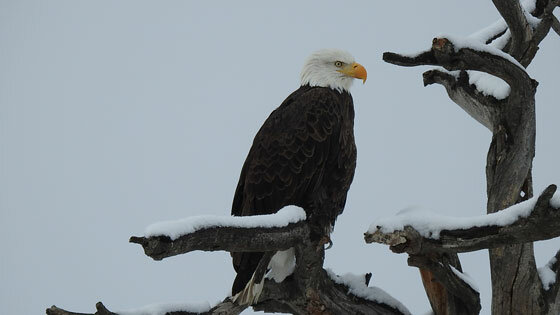
Photo courtesy Roger Organ
This week’s Bird of the Week, compliments of the Weminuche Audubon Society and Audubon Rockies, is the bald eagle.
The story of the bald eagle is one of a successful recovery from plummeting numbers caused primarily by trapping, shooting and pesticide poisoning. In the mid-1960s, only around 400 pairs of this long-lived bird were found living in North America.
Thanks to protections afforded by the Endangered Species Act and the ban on DDT in our country, today there are more than 200 known nest sites in Colorado, while in the 1970s there were only three. Although the bald eagle can be found near water across the lower United States in winter, most move north to breed across Canada and Alaska. Our area is included among the less common breeding areas found in interior states.
Mated pairs remain together for life and reinforce bonding with elaborate flight displays. They build some of the largest of all bird nests, typically high in a tree, close to the trunk. Stick nests are reused and added to year after year, sometimes becoming so large and heavy that they topple the tree.
A part of this bird’s success is its opportunistic eating habits. Although fish is its primary food, it will also consume mammals, birds, carrion and garbage. It has the ability to gorge when food is plentiful, and take several days to digest it. In this way it can survive without eating for days, or even weeks, if necessary.
From its status as our national symbol, large wingspan, and unmistakable white head and tail and dark brown body, an adult bald eagle is recognizable even in flight. Juveniles and immatures, which take four to five years to reach full adult plumage, can be difficult to distinguish from golden eagles without careful observation.
Today, lead poisoning from bullet fragments in gut piles left by hunters is one of the preventable dangers these magnificent birds face.
For information on events visit, www.weminucheaudubon.org and www.facebook.com/weminucheaudubon/.